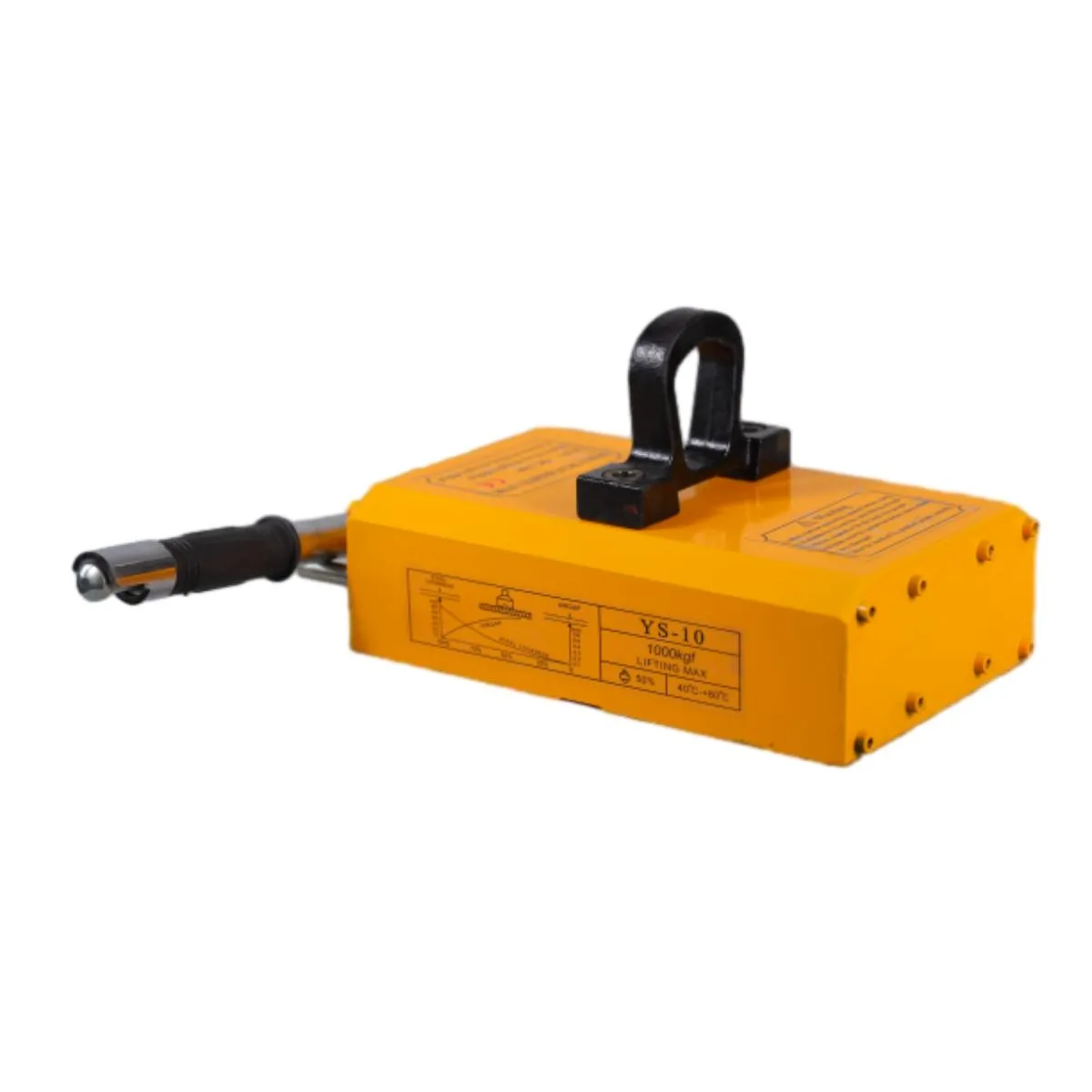Innovative Lifting Solutions Using Below Hook Lifting Magnets for Enhanced Material Handling Efficiency
Understanding Below-the-Hook Lifting Magnets
Below-the-hook lifting magnets are essential tools in various industries for handling and transporting heavy ferromagnetic materials. They provide an efficient, safe, and cost-effective method for moving materials that would otherwise require cumbersome rigging and manual handling. This article will explore the advantages, types, working principles, and applications of below-the-hook lifting magnets.
What Are Below-the-Hook Lifting Magnets?
Below-the-hook lifting magnets are devices designed to be attached to a crane or hoist. Unlike traditional hooks, which rely on slings and chains to secure loads, these magnets provide a magnetic grip on ferrous materials, allowing for a seamless transfer of objects from one location to another. They can handle various shapes and sizes of materials, from plates and sheets to heavy machinery parts.
Advantages of Using Lifting Magnets
1. Increased Safety The use of lifting magnets minimizes the risk of injuries associated with manual lifting and rigging. Since the magnets secure the load directly, there is less chance of the items slipping or falling during transport.
2. Efficiency Lifting magnets allow for faster loading and unloading of materials. The time saved in rigging and driving overhead cranes translates into increased productivity and reduced operational costs.
3. Reduced Equipment Needs Conventional lifting methods often require additional equipment, such as chains, slings, and hooks. Lifting magnets can eliminate or reduce the need for such accessories, simplifying operations.
4. Minimal Damage Magnetic lifting reduces the risk of damaging the materials being handled. Traditional methods can lead to scratches, dents, or other types of damage, especially with delicate items.
Types of Below-the-Hook Lifting Magnets
below the hook lifting magnets

1. Permanent Lifting Magnets These magnets use a permanent magnetic field and do not require an external power source. They are ideal for operations where mobility and ease of use are crucial, making them suitable for various lifting applications.
2. Electromagnetic Lifting Magnets These offer a stronger magnetic pull and can be turned on and off, allowing for precise control during lifting and releasing. They require a power source, typically connected to an electricity supply, making them suitable for heavy and continuous-duty operations.
3. Battery-Powered Lifting Magnets These are similar to electromagnetic magnets but are equipped with a battery. They combine the benefits of electromagnetic lifting with portability, allowing operation in locations without direct power sources.
Working Principles
Below-the-hook lifting magnets operate based on the science of magnetism. When activated, either through a permanent field or electricity, the magnet generates a magnetic field that attracts ferrous materials. Once the load is secured, the magnet can be lifted using a crane or hoist. To release the load, the magnet is deactivated, allowing gravity to take over, or the magnet’s grip is neutralized.
Applications of Lifting Magnets
These lifting devices are widely used across numerous sectors
- Manufacturing In manufacturing plants, lifting magnets are utilized for moving raw materials like steel sheets, bars, and coils. - Construction In construction sites, they are essential for transporting heavy machinery parts or structural steel. - Recycling Below-the-hook lifting magnets are invaluable in recycling facilities, helping to efficiently handle scrap metal and other ferrous materials. - Shipyards These devices facilitate the movement of large metal components during shipbuilding or repair processes.
Conclusion
In conclusion, below-the-hook lifting magnets represent a significant advancement in material handling. Their ability to enhance efficiency, safety, and operational effectiveness in various industries makes them an invaluable asset. As technology progresses, we can expect even more innovative lifting solutions that will continue to improve the way heavy materials are transported and handled.
-
Unlock Seamless Relocation with Our Heavy Equipment Moving ExpertiseNewsJun.06,2025
-
Unleash Unrivaled Flexibility with Our Adjustable Gantry CraneNewsJun.06,2025
-
Unleash Heavy-Duty Efficiency with Our Industrial Gantry Crane SolutionsNewsJun.06,2025
-
Revolutionize Steel Handling with Our Magnetic Lifter RangeNewsJun.06,2025
-
Master Equipment Mobility with Premium Machinery Mover SolutionsNewsJun.06,2025
-
Elevate Your Material Handling with Magnetic Lifter TechnologyNewsJun.06,2025
-
YS Permanent Lifting Magnets: The Smarter Way to Handle SteelNewsMay.22,2025
